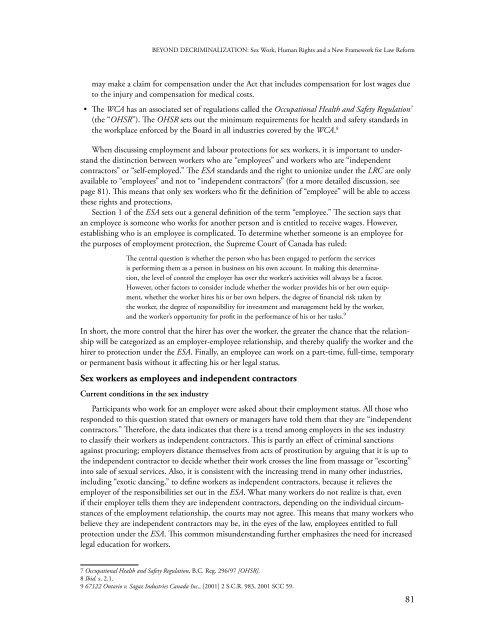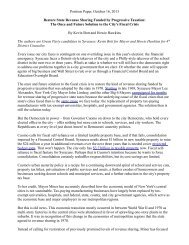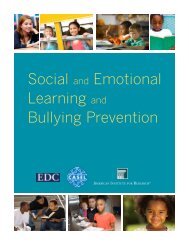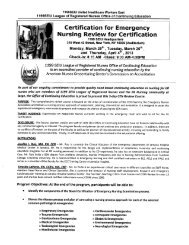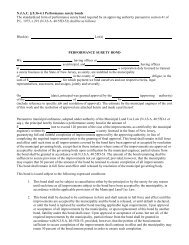Beyond Decriminalization: Sex-work, Human Rights and a New ...
Beyond Decriminalization: Sex-work, Human Rights and a New ...
Beyond Decriminalization: Sex-work, Human Rights and a New ...
- No tags were found...
You also want an ePaper? Increase the reach of your titles
YUMPU automatically turns print PDFs into web optimized ePapers that Google loves.
BEYOND DECRIMINALIZATION: <strong>Sex</strong> Work, <strong>Human</strong> <strong>Rights</strong> <strong>and</strong> a <strong>New</strong> Frame<strong>work</strong> for Law Reformmay make a claim for compensation under the Act that includes compensation for lost wages dueto the injury <strong>and</strong> compensation for medical costs.• The WCA has an associated set of regulations called the Occupational Health <strong>and</strong> Safety Regulation (the “OHSR”). The OHSR sets out the minimum requirements for health <strong>and</strong> safety st<strong>and</strong>ards inthe <strong>work</strong>place enforced by the Board in all industries covered by the WCA. When discussing employment <strong>and</strong> labour protections for sex <strong>work</strong>ers, it is important to underst<strong>and</strong>the distinction between <strong>work</strong>ers who are “employees” <strong>and</strong> <strong>work</strong>ers who are “independentcontractors” or “self-employed.” The ESA st<strong>and</strong>ards <strong>and</strong> the right to unionize under the LRC are onlyavailable to “employees” <strong>and</strong> not to “independent contractors” (for a more detailed discussion, seepage 81). This means that only sex <strong>work</strong>ers who fit the definition of “employee” will be able to accessthese rights <strong>and</strong> protections.Section 1 of the ESA sets out a general definition of the term “employee.” The section says thatan employee is someone who <strong>work</strong>s for another person <strong>and</strong> is entitled to receive wages. However,establishing who is an employee is complicated. To determine whether someone is an employee forthe purposes of employment protection, the Supreme Court of Canada has ruled:The central question is whether the person who has been engaged to perform the servicesis performing them as a person in business on his own account. In making this determination,the level of control the employer has over the <strong>work</strong>er’s activities will always be a factor.However, other factors to consider include whether the <strong>work</strong>er provides his or her own equipment,whether the <strong>work</strong>er hires his or her own helpers, the degree of financial risk taken bythe <strong>work</strong>er, the degree of responsibility for investment <strong>and</strong> management held by the <strong>work</strong>er,<strong>and</strong> the <strong>work</strong>er’s opportunity for profit in the performance of his or her tasks. In short, the more control that the hirer has over the <strong>work</strong>er, the greater the chance that the relationshipwill be categorized as an employer-employee relationship, <strong>and</strong> thereby qualify the <strong>work</strong>er <strong>and</strong> thehirer to protection under the ESA. Finally, an employee can <strong>work</strong> on a part-time, full-time, temporaryor permanent basis without it affecting his or her legal status.<strong>Sex</strong> <strong>work</strong>ers as employees <strong>and</strong> independent contractorsCurrent conditions in the sex industryParticipants who <strong>work</strong> for an employer were asked about their employment status. All those whoresponded to this question stated that owners or managers have told them that they are “independentcontractors.” Therefore, the data indicates that there is a trend among employers in the sex industryto classify their <strong>work</strong>ers as independent contractors. This is partly an effect of criminal sanctionsagainst procuring; employers distance themselves from acts of prostitution by arguing that it is up tothe independent contractor to decide whether their <strong>work</strong> crosses the line from massage or “escorting”into sale of sexual services. Also, it is consistent with the increasing trend in many other industries,including “exotic dancing,” to define <strong>work</strong>ers as independent contractors, because it relieves theemployer of the responsibilities set out in the ESA. What many <strong>work</strong>ers do not realize is that, evenif their employer tells them they are independent contractors, depending on the individual circumstancesof the employment relationship, the courts may not agree. This means that many <strong>work</strong>ers whobelieve they are independent contractors may be, in the eyes of the law, employees entitled to fullprotection under the ESA. This common misunderst<strong>and</strong>ing further emphasizes the need for increasedlegal education for <strong>work</strong>ers. Occupational Health <strong>and</strong> Safety Regulation, B.C. Reg. 296/97 [OHSR]. Ibid. s. 2.1. 67122 Ontario v. Sagaz Industries Canada Inc., [2001] 2 S.C.R. 983, 2001 SCC 59.81


